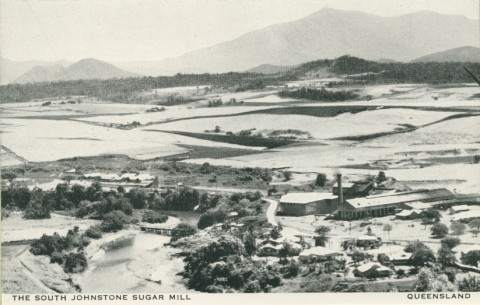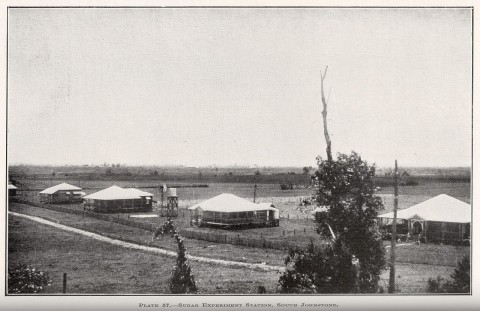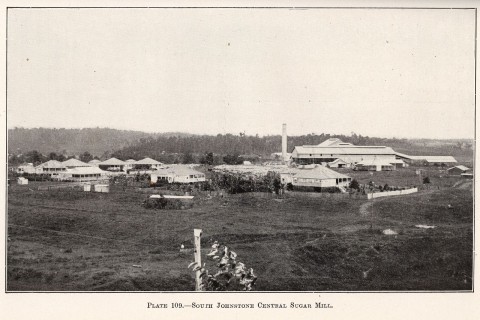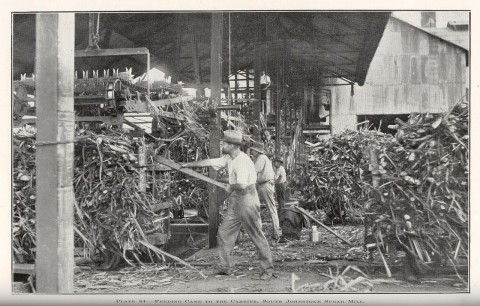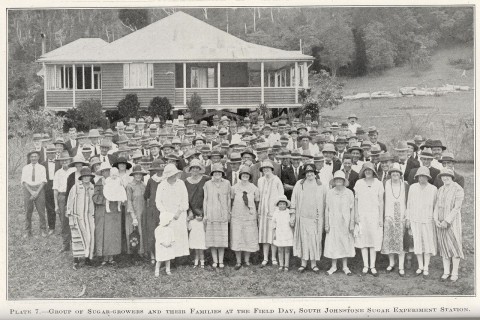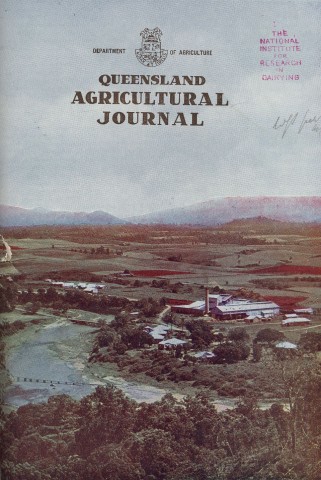South Johnstone, a rural town, is 10 km south of Innisfail and 80 km south-east of Cairns. It is on the South Johnstone River, which was named by the explorer, George Dalrymple, in 1873 after Robert Johnstone, sub-inspector of the native police. Dalrymple had also been a sub-inspector before embarking on the Government directed exploration of north Queensland.
About ten years after the first sugar cane was grown at Innisfail a syndicate financed a plantation on the South Johnstone River. A mill and a cane tramway were constructed, but closed in 1891 shortly after Queensland enacted restrictive legislation for the employment of Kanaka labour. The revival of sugar growing depended on mills at Goondi and Mourilyan.
In 1911 a Royal Commission inquired into the desirability of an additional central mill and a site was chosen at South Johnstone. There was already a tramline branch between there and the Innisfail tramway, which led to the Mourilyan wharf. A government controlled South Johnstone mill crushed its first cane in 1916, producing 4729 tones of sugar. (Production in some years in the 1970s exceeded 100,000 tonnes, and it celebrated 50 years as a grower-owned co-operative mill in 1977.) Throughput was increased in the 1920s with the El Arish soldier settlement cane farms, although their cane was later diverted to the Tully mill.
South Johnstone cane farms were notable for labour unrest in the 1920s, partly caused by Weils disease carried by rats and the refusal by farmers to burn the cane to get rid of vermin.
The township had five stores, a baker, a butcher, a sawmill, a school (1916) and a refreshment room in the mid-1920s, but its steady growth in population led to a more diverse array of facilities by the postwar years. The Post Office Directory (1947) recorded a sugar experimental station, the Bureau of Tropical Agriculture, the South Johnstone sugar mill, a foundry, a school of arts, the Plaza cinema, several stores and St Rita's convent school (1932). The population was over 900, regularly swelled by casual cane cutters.
By the end of the twentieth century South Johnstone's census population was under 500, accounted for in part by the exit of farmers from the district and a preference for residing in nearby Innisfail. In 2001 the sugar mill went into receivership and was sold to Bundaberg Sugar. Subsequently some of the district's cane was directed to the Tully mill. By 2004 South Johnstone's main street had more boarded-up shops than active frontages. The town's position on a tourist route was seen as a possible means of rescue, and low house prices offered affordable dwellings..
South Johnstone has State and Catholic primary schools (1916, 1932), a heritage-listed Anglican church (1938) of Spanish Mission design, a Primary Industries Department research station, the South Johnstone sugar mill, a general store and a bowling club. Its census populations have been:
| Census Date | Population |
|---|---|
| 1911 | 172 |
| 1921 | 640 |
| 1947 | 918 |
| 1966 | 571 |
| 1986 | 609 |
| 2006 | 482 |
| 2011 | 411 |
Sunday Mail, 2 March 2003, p20
Alan Hudson, Sweet success: a story of South Johnstone mill, Brisbane, Christopher Beck Books, 1995
